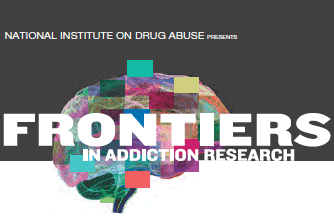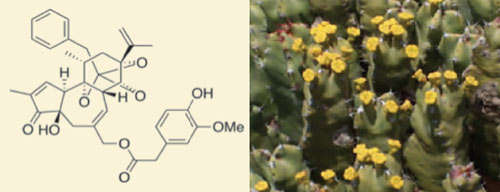The past 4 decades have witnessed explosive growth in knowledge about the brain's inner workings. For example, neuroscientists have identified an expanding list of neurochemicals and receptor proteins that form the backbone of cell-to-cell communication, developed animal models that mimic neurological conditions, and parsed how gene activation and suppression by environmental factors influence learning and memory. NIDA-funded scientists have contributed to and drawn upon these advances as they have established that drug addiction is a brain disease—the conceptual foundation of effective drug abuse treatment and prevention.
Today the rate of discovery in brain science is swifter than ever. Each week, neuroscience labs and journals announce new tools and insights that have potential to reduce drug abuse and addiction and ameliorate their health and social consequences. It is the mission of the Institute's Neuroscience Consortium to monitor developments in brain science and ensure that NIDA's research programs are infused with the most current and most powerful knowledge and tools.

Sharing Neuroscience Knowledge
Neuroscience is progressing so rapidly that scientists find it challenging to stay abreast of advances in their own areas, let alone across the entire field. Created in 1994, NIDA's Neuroscience Consortium helps NIDA staff keep pace with cutting-edge brain science related to addiction. The approximately 50 Consortium members represent every division of NIDA and virtually all offices, centers, and programs. Co-chairs of the Neuroscience Consortium—NIDA's Science Education Coordinator Dr. Cathrine Sasek, Office of Science Policy and Communications, and Program Officer Dr. Mary Kautz, Clinical Neuroscience Branch, Division of Clinical Neuroscience and Behavioral Research—coordinate the group's overall activities. Other members initiate and lead activities according to their interests and expertise.
Consortium members seek out and share the latest, most promising findings with each other and the rest of the Institute staff. Part of each monthly Consortium meeting is devoted to what the group calls Hot Trends in NeuroScience. One member reports on a research paper relevant to his or her area. The group discusses the study, focusing on how the results might influence NIDA's research. Consortium members then share the information with other NIDA colleagues whose initiatives might benefit from it.
The Consortium also conducts NIDA's Cutting Edge Seminar series for all staff, other NIH researchers, and the public. These seminars enlist speakers from outside NIDA—some from other NIH institutes, others from universities—for a half-day event focusing on a specific topic. A 2009 Cutting Edge Seminar, for example, presented the techniques, findings, and potential of resting state functional connectivity. This promising new neuroimaging approach analyzes the network dynamics of the whole brain when a subject is awake but not responding to any particular external stimulus. The technique measures synchronous activity across brain regions. Researchers are investigating how resting brain dynamics differ between normal individuals and people with brain disorders, such as attention deficit hyperactivity disorder and bulimia. The technique also examines brain dynamics as people shift from the resting state to a task-oriented one. NIDA-funded scientists are examining whether normal brain activity during the shifts is disrupted in people addicted to drugs.
The Consortium also organizes activities to attract a greater number of talented scientists to the challenges of addiction research. As part of this effort, the Consortium coordinates a NIDA-sponsored Frontiers in Addiction Mini-Convention at the annual meeting of the Society for Neuroscience (SfN), the world's largest forum for research on brain science and health. The day-long mini-convention on trends in addiction research typically draws more than 500 scientists, including many who are new to addiction science. A highlight is always an address by the winner of the Jacob P. Waletzky Memorial Award, selected by SfN to recognize a junior scientist conducting innovative research into the neurobiology of drug addiction.
Influencing NIDA Programs
Consortium activities have had a major impact on NIDA research programs and initiatives. For instance, in a November 2002 Cutting Edge Seminar, Dr. Andrew Mannes of the National Institute of Dental and Craniofacial Research presented his results from animal research on the pain-fighting effects of resiniferatoxin (RTX)—a naturally occurring nonopioid pain reliever with a different biological target than most analgesics ("Basic Science Discoveries Yield Novel Approaches to Analgesia"). NIDA staff who coordinate efforts to develop safe and effective treatments for pain attended the seminar and subsequently formed a team to seek approval from the Food and Drug Administration (FDA) for clinical trials of RTX. In 2008, the FDA granted such approval for the testing of RTX in patients with pain from advanced cancer. Initial findings indicate that RTX has strong analgesic power with no appreciable side effects.
 From Plant to Painkiller: The Use of Resiniferatoxin to Reduce Chronic Pain by Selectively Ablating Spinal C-Fiber, a Cutting Edge Seminar sponsored by the Neuroscience Consortium, called NIDA program officers' attention to research on resiniferatoxin (RTX; below, left). That chemical had been extracted from a cactus-like plant, Euphorbia resinifera (below, right) and seems to provide powerful pain relief. NIDA subsequently facilitated FDA approval for clinical trials to be conducted by Dr. Andrew Mannes of the NIH Clinical Center. Because RTX does not act on brain receptors, it may offer a long-term treatment for some types of chronic pain without many of the side effects and addiction potential that are associated with opioid analgesics.
From Plant to Painkiller: The Use of Resiniferatoxin to Reduce Chronic Pain by Selectively Ablating Spinal C-Fiber, a Cutting Edge Seminar sponsored by the Neuroscience Consortium, called NIDA program officers' attention to research on resiniferatoxin (RTX; below, left). That chemical had been extracted from a cactus-like plant, Euphorbia resinifera (below, right) and seems to provide powerful pain relief. NIDA subsequently facilitated FDA approval for clinical trials to be conducted by Dr. Andrew Mannes of the NIH Clinical Center. Because RTX does not act on brain receptors, it may offer a long-term treatment for some types of chronic pain without many of the side effects and addiction potential that are associated with opioid analgesics."The pace of new findings in neuroscience is staggering, and it is necessary to learn from each other to keep up," says Dr. Kautz. "As a program official, I find Consortium events thought-provoking and a great opportunity to find out about advances in neuroscience. These help NIDA staff to generate creative approaches to the science of addiction."
Looking to the future, the Consortium plans to continue to highlight exciting findings about the brain. "Our goal is to encourage NIDA scientists to delve into new areas of scientific inquiry that have great potential to transform addiction research," says Dr. Sasek.
